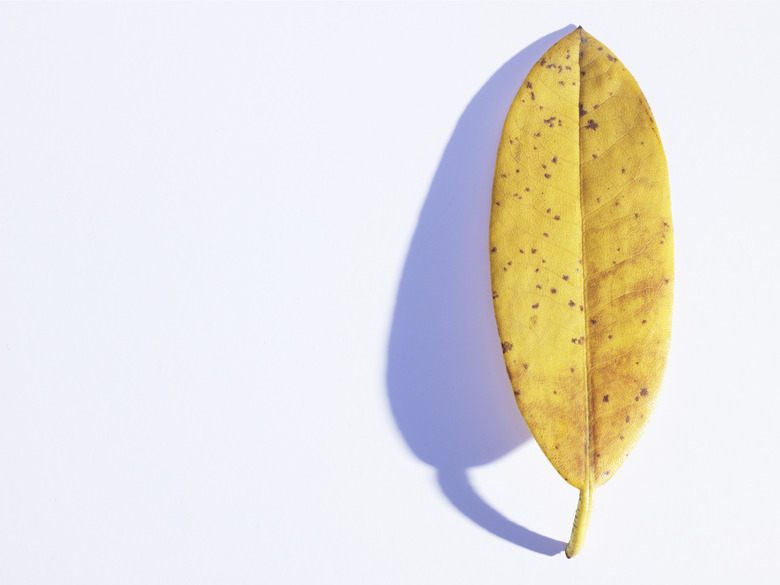Brown Spots On My Ficus Rubber Tree's Leaves
Freckles may be cute on your kids, but if your rubber tree (Ficus elastica) has brown spots dotted on its leaves, it is likely a symptom of disease instead of harmless aesthetics. Whether you grow it outside in U.S. Department of Agriculture plant hardiness zones 10 through 12, or indoors as a houseplant, rubber tree is susceptible to various diseases that mar its foliage with brown spots.
Anthracnose
Step 1
Anthracnose, a fungal disease that attacks many plants, is caused by different pathogens, but on rubber tree the primary offenders are species of the Glomerella and Colletotrichum genera. Because these fungi need water to reproduce, wet leaves provide a favorable environment for this disease to prosper. Leaf spots may appear initially as tiny, yellow dots, but they eventually turn dark brown. Diseased leaves may fall from plants, where they harbor fungal spores that may continue to infect your plant.
Botrytis Blight
Step 1
Botrytis blight, which is caused by the pathogen Botrytis cinerea, is another fungal disease that may cause brown spots on rubber tree's foliage. In contrast to the smaller dots of anthracnose, blighted spots are larger and are typically bordered by layers of rings. This ringed effect gives this disease its common name, gray mold, because of its moldy appearance. Infected leaves may drop prematurely and continue to produce infectious spores. Botrytis favors cool weather, particularly during a wet spring.
- Freckles may be cute on your kids, but if your rubber tree (Ficus elastica) has brown spots dotted on its leaves, it is likely a symptom of disease instead of harmless aesthetics.
Bacterial Blight
Step 1
Bacterial blight, caused by the pathogen Xanthomonas campestris pv. fici, is the primary bacterial disease of ficus species, notes University of Florida IFAS Extension. Unlike fungal leaf spot diseases, bacterial blight does not need water to reproduce, although it may spread to plants by splashing from the soil to the leaves or from plant to plant. Bacterial blight invades a rubber tree through wounds, such as pruning cuts, or natural openings, such as the stomata that occur naturally on leaves. Leaf spots produced by this disease look different than those caused by fungal diseases. Initially, the spots are tiny water-soaked dots that grow together into irregularly shaped brown lesions.
Disease Management
Step 1
If you notice brown spots on your rubber tree, whether they're caused by a fungal or bacterial problem, it may be difficult to manage the disease. Once you notice brown spots, a disease is already present. Remove all leaves with brown spots from plants, and also remove any dropped leaves to help break the life cycle of these diseases. If you grow rubber tree outside, keep its foliage dry by moving sprinklers or redirecting sprinkler heads away from the plant, and do not mist your plant if you grow it indoors. If your rubber tree is in a container, repot it in sterilized potting mix and discard the contaminated soil.
- Bacterial blight, caused by the pathogen Xanthomonas campestris pv.
- Unlike fungal leaf spot diseases, bacterial blight does not need water to reproduce, although it may spread to plants by splashing from the soil to the leaves or from plant to plant.
